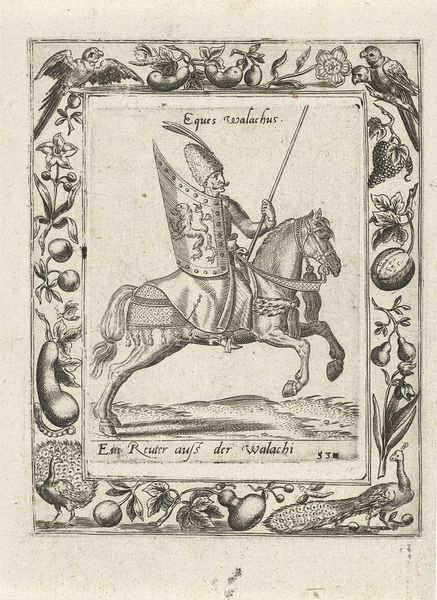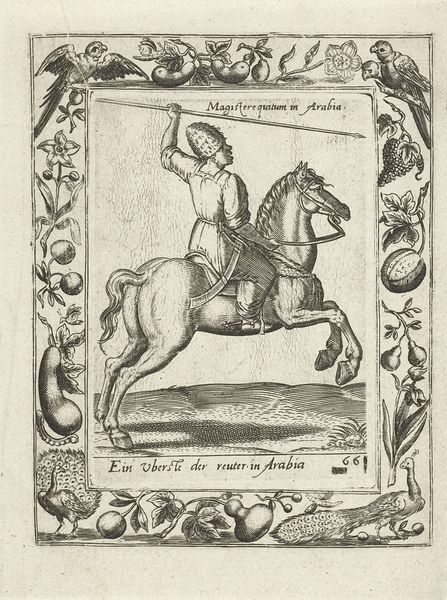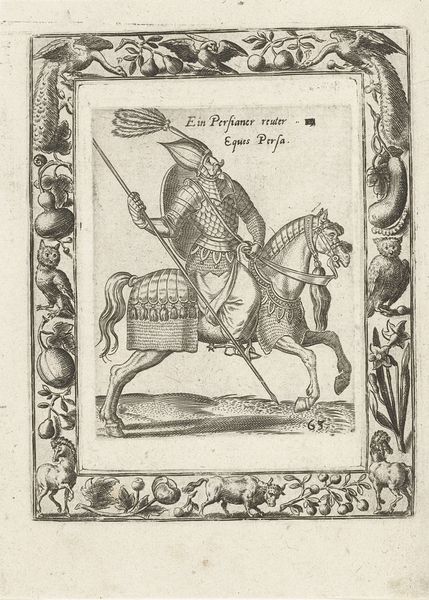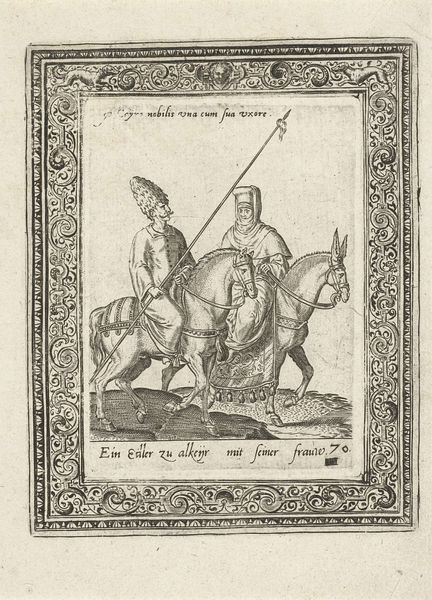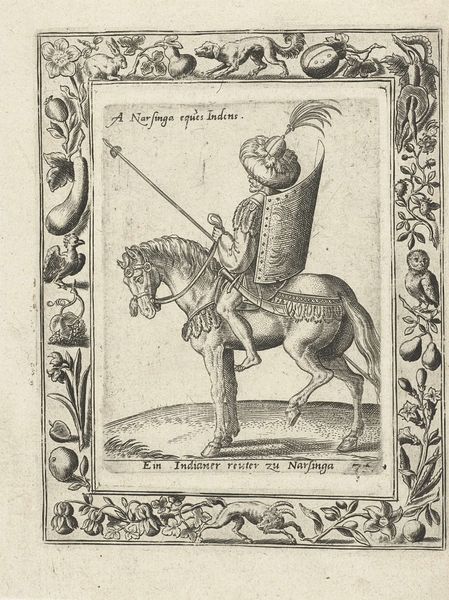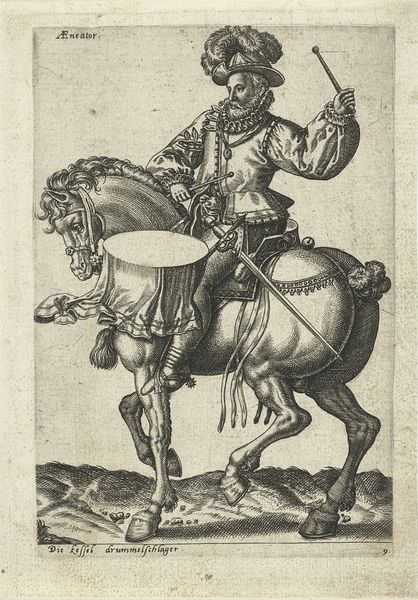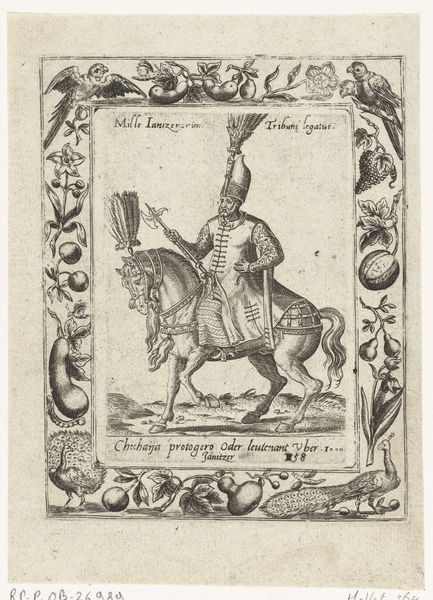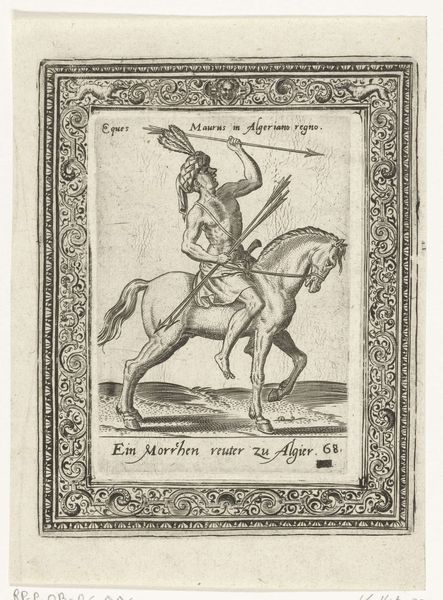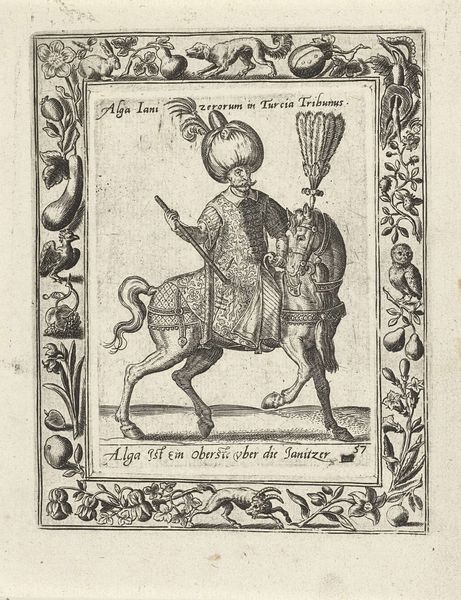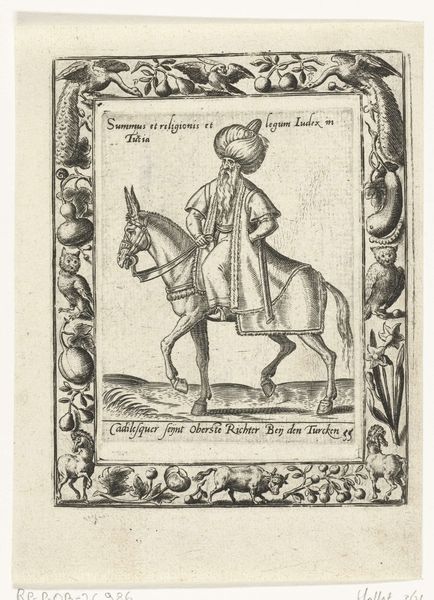
print, etching, engraving
#
portrait
# print
#
pen sketch
#
etching
#
old engraving style
#
landscape
#
mannerism
#
figuration
#
orientalism
#
pen work
#
history-painting
#
engraving
Dimensions: height 107 mm, width 77 mm, height 141 mm, width 112 mm
Copyright: Rijks Museum: Open Domain
Editor: Here we have a print called "Mammeluk te paard," created around 1577 by an anonymous artist, currently residing at the Rijksmuseum. It's done using etching and engraving, a Mamluk warrior, looking formidable upon his horse. It's all quite striking. What are your initial thoughts about this print? Curator: This print is fascinating, especially considering the historical context. In the late 16th century, Europe's understanding of the East was heavily mediated through travelogues, diplomatic exchanges, and, of course, artworks. The "Mammeluk te paard" embodies this fascination, presenting the Mamluk – a warrior class that held power in Egypt for centuries – through a distinctly European lens. Editor: So, it’s less about realistic representation and more about… projection? Curator: Precisely. How might the print’s imagery reinforce existing power dynamics and cultural biases? It uses a very specific artistic language influenced by Mannerism, also displaying a vision filtered through prevailing social, political ideas of the period. The surrounding frame, filled with what appears to be both familiar and exotic fruits and animals, further contributes to the narrative, exoticizing the subject within a controlled European framework. The Mamluk warrior is presented, but is he understood? Editor: It feels like viewing another culture from a distance, like a theatrical staging. So, who do you think the intended audience of such imagery was? Curator: Likely an aristocratic and scholarly class, eager to consume images from far away lands. Consider the role these images played in shaping European identity by creating this image of the Other. They reinforced European identity through exoticized representations of cultures far away. Editor: I see how the piece creates an imagined version of a different culture. This really offers a different insight on what I understood of representation. Thanks for helping me understand how history shapes art's reception! Curator: And thank you for exploring this intricate dance between representation and historical power!
Comments
No comments
Be the first to comment and join the conversation on the ultimate creative platform.
